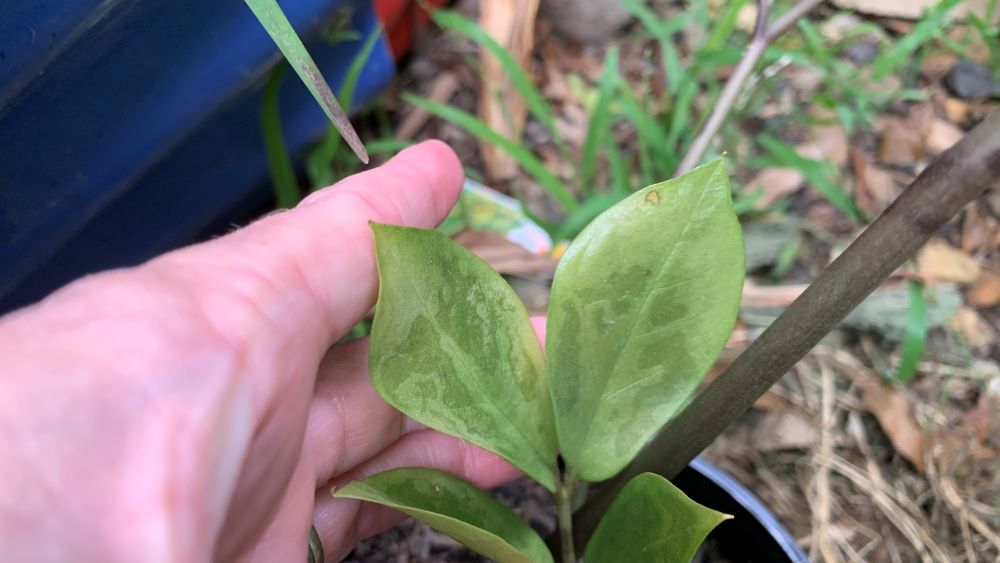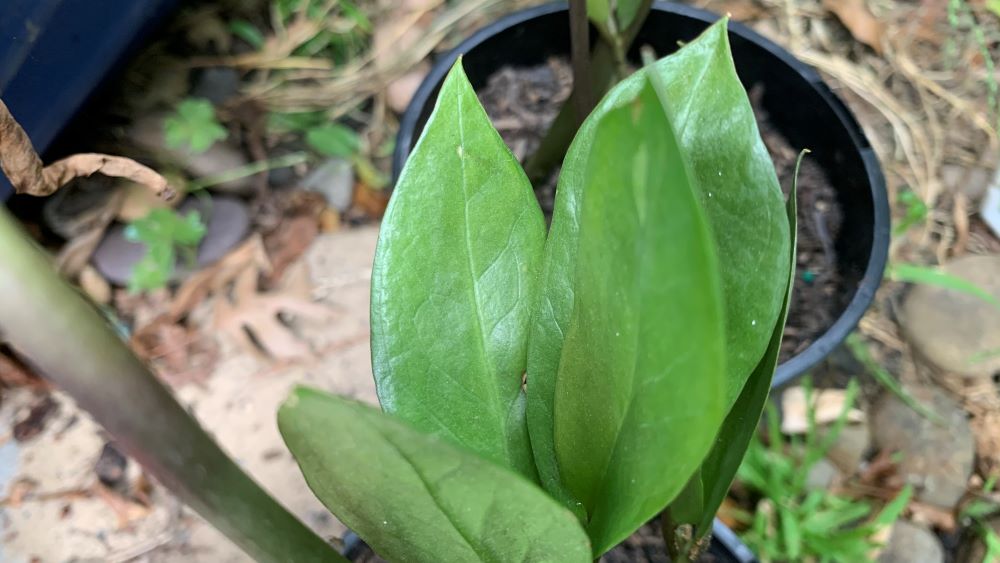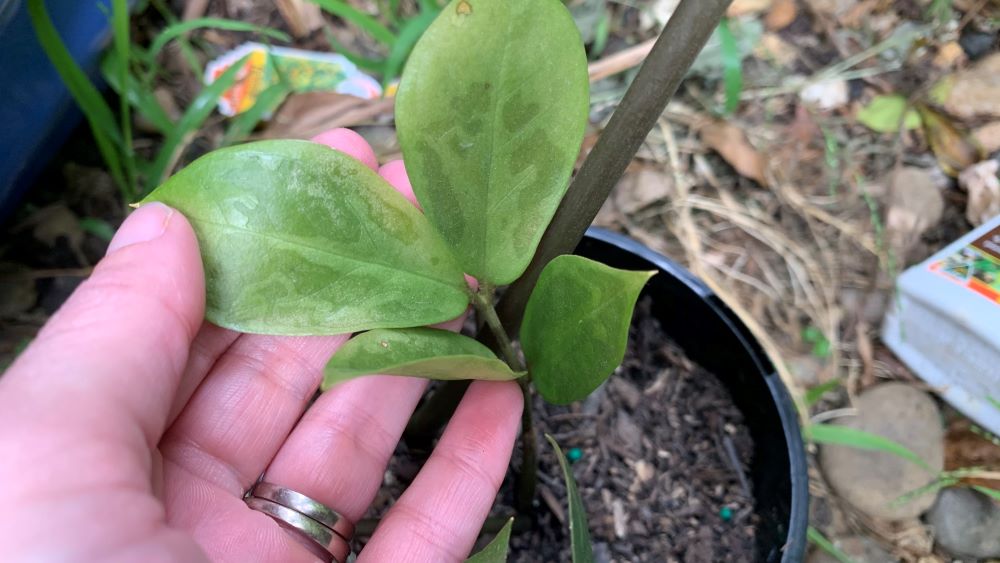ZZ plants or Zanzibar Gem are one of my favorite indoor plants but they can get yellow leaves after repotting. Yellow leaves can be caused by overwatering, too much light, the pot is too large, poor soil or stem damage. Avoid overwatering and move the plant to a shaded area of your yard or house.
This article will explore all of the causes of yellow leaves on ZZ plants after repotting. Find out what the problem could be and easy solutions.
Causes of yellow leaves on ZZ plants after repotting
Here are the top 8 reasons for yellowing leaves on ZZ plants after you repot them.
1. Overwatering
Overwatering is the top cause of yellowing leaves after the plant has been repotted. While watering the plant in after repotting is important, if the soil stays wet for too long the roots can be damaged. Too much water can also wash away nutrients from the soil and the plant can temporarily suffer.
To solve this problem leave the plant in a shaded place for around 4 weeks before watering again. Allow the soil time to dry out and only add more once the soil has dried out. Make sure there is no excess water sitting in the pot tray that can rot the roots.

2. Too much light
A ZZ plant that has been kept in a shaded area or darker part of your house can start to turn yellow if it is exposed to too much light. Too much light can damage the leaves and stems if it is used to being in a shady spot.
Move the plant back into the same spot it was prior to repotting. Too much light, even from a bright window can cause the leaves to turn yellow and burn.

3. The new pot is too big
ZZ plants that are moved into pots that are too big can develop yellow leaves. Pots that are too large can hold a lot of soil that can stay wet for too long. This cold, wet soil can damage the roots of the ZZ plant and cause the leaves to turn yellow.
Damaged root tips will not be able to absorb nutrients well including nitrogen. Nitrogen is key to green leaves and without it the leaves can quickly turn yellow.
If the pot was more than 2 inches wider than the original pot, this could be the problem. Remove the plant and repot it again into a smaller pot with new soil. This will allow the plant to dry out, and the soil will not stay wet as long.
You should see green leaves return in 2-3 weeks. The new soil will also contain extra nitrogen to help the leaves recover.
4. Poor soil choice
ZZ plants that have been repotted into poor soil can turn yellow over time. Poor quality potting soil will contain organic matter, usually from composted bark mulch but may not contain any slow release fertilizer. These soils will need to be topped up with fertilizer to feed the plant.
You can add some slow release fertilizer to the ZZ plant. Choose an indoor fertilizer to avoid any unwanted smells indoors. This will give a nitrogen boost and help the plant recover. Add fertilizer 1-2 weeks after transplanting if the soil does not already contain any.

5. Root rot
Root rot can cause the ZZ plant’s leaves to turn yellow after repotting. Too much water can cause the roots and rhizome to rot. The plant will struggle to absorb nutrients and the leaves can turn yellow.
Slow down your watering, add some slow release indoor plant fertilizer and wait for 2-3 weeks. You should see the plant start to recover and even new leaves start to grow.
6. Not enough water
A rare cause of yellowing leaves on repotted ZZ plants is a lack of water. If you forget to water it in or leave it for longer than 4 weeks after planting before watering it can dry out.
Keep ZZ plants happy by watering them every month deeply. Place them in your sink or outdoors and thoroughly soak the soil. Allow it to drain out for 5-10 minutes before placing it back in the outer pot.
7. Bending and breaking the leaves or stems
Another cause of yellowing leaves on ZZ plant after repotting is accidental breakage or damage to the leaves themselves or the stems. This can stop nutrients and water from travelling up and cause the leaves to turn yellow and die.
Plants cannot recover from damage like this so it is better to take some sharp, clean secateurs and trim off the damaged areas. The plants will grow new stems to replace the old.
8. Too much fertilizer
Adding too much fertilizer can actually damage a ZZ plant. Use a slow release fertilizer on the plant or if your potting soil already contains it you will not need to add any for 2-3 months. Add some indoor plant fertilizer in spring.
If you add too much liquid fertilizer it can easily damage ZZ plants. I prefer to use a slow release fertilizer on them instead to avoid overfertilizing.

ZZ Plant has yellow leaves after repotting | Summary
ZZ plants can develop yellow leaves after repotting due to the soil becoming too wet, too dry or if they are damaged when they are moved. Remove damaged leaves, water every month and give them some slow release fertilizer in spring.
You should see the plant recover with new stems over time and new leaves. ZZ plants will recover if they are treated right. Choose a shady spot or a dark corner in your room and add a ZZ plant for color.
Happy growing.
For more on growing ZZ plant check out my previous article: How to divide a ZZ plant | Easy 8 Step Guide
I am an accredited practicing dietitian, experienced gardener and a dedicated cook. I love writing and sharing my experience so you can learn from my successes and mistakes.
